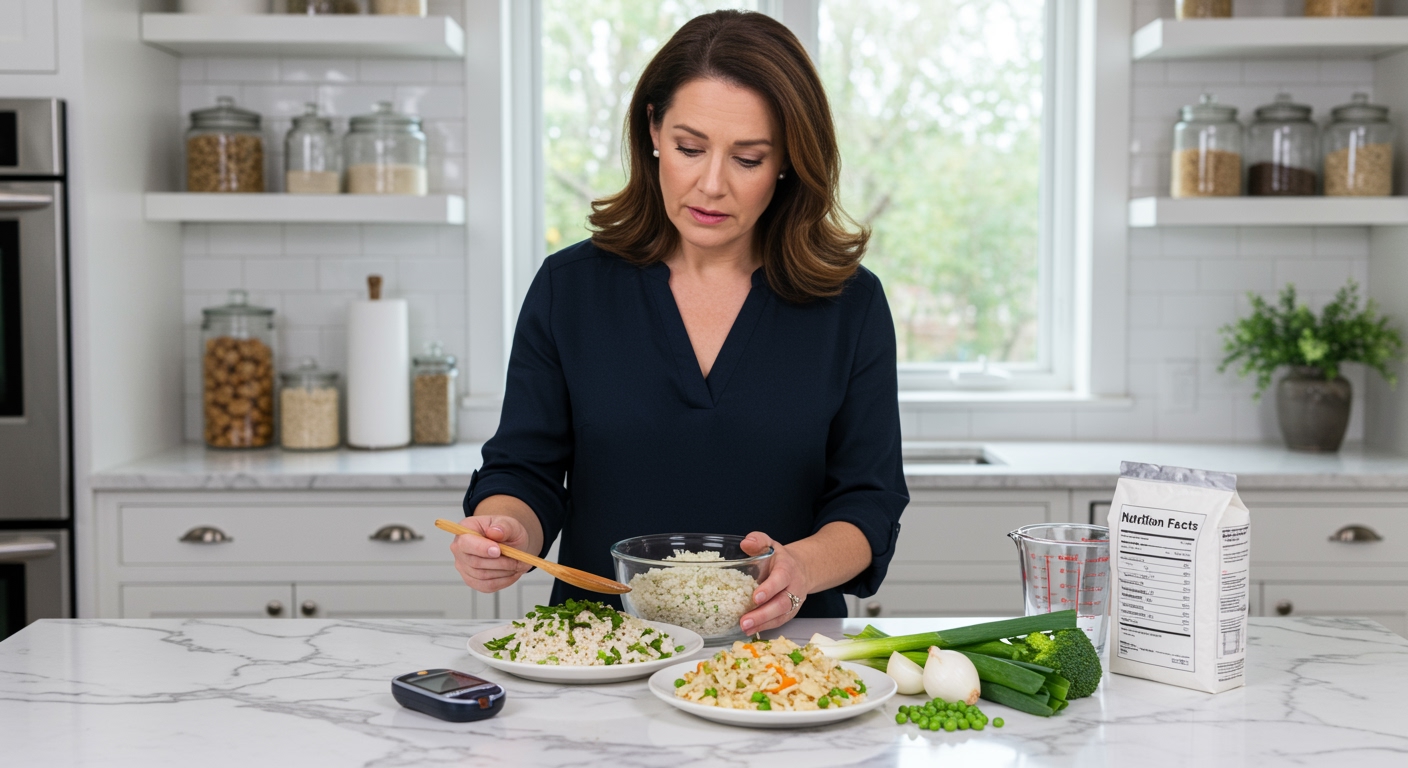✪ Key Takeaway: Flattened rice has a high glycemic index of 76-89, making it unsuitable for diabetes management and blood sugar control.
Introduction
Your morning bowl of flattened rice might be sabotaging your blood sugar without you knowing it.
You probably chose flattened rice because it seems like a healthy breakfast option that cooks quickly and tastes good with vegetables.
Hi, I’m Abdur, your nutrition coach and today I’m going to explain exactly how flattened rice affects your blood sugar and what you should do instead.
What Happens When You Eat Flattened Rice?
Flattened rice enters your bloodstream faster than regular rice because of its processing method.
The flattening process breaks down the grain structure and removes most of the fiber content.
This means your digestive system can convert it to glucose much more quickly than whole grains.
Within 30 minutes of eating flattened rice, your blood sugar starts to spike rapidly.
Your pancreas responds by releasing a large amount of insulin to handle this sudden glucose rush.
This creates a cycle of blood sugar highs followed by crashes that makes diabetes management much more difficult.
✪ Fact: Flattened rice loses up to 80% of its original fiber during processing.
How High Is The Glycemic Index Of Flattened Rice?
The glycemic index of flattened rice ranges from 76 to 89, placing it firmly in the high glycemic category.
Foods with a glycemic index above 70 are considered high and should be avoided by people with diabetes.
To put this in perspective, white bread has a glycemic index of 75, making flattened rice even more problematic for blood sugar control.
The exact glycemic index depends on the thickness of the flakes and how they are prepared.
Thinner flakes have a higher glycemic index because they are digested and absorbed more rapidly.
Even when you add vegetables to flattened rice, the overall glycemic load remains high enough to cause blood sugar spikes.
✪ Pro Tip: Always check your blood sugar 2 hours after eating any new food to understand its impact.
Why Do People Think Flattened Rice Is Healthy?
Many people believe flattened rice is healthy because it contains some vitamins and minerals.
Food companies often fortify flattened rice with iron and B vitamins, which creates a health halo effect.
The addition of vegetables like onions, peas, and curry leaves makes it seem like a balanced meal.
Traditional preparation methods also contribute to the perception that flattened rice is a wholesome breakfast option.
However, the processing method removes most of the natural nutrients and fiber that make whole grains beneficial.
The small amount of added nutrients cannot compensate for the rapid blood sugar spike it causes in people with diabetes.
✪ Note: Fortified nutrients are not as well absorbed as those found naturally in whole foods.
What Are Better Breakfast Options For Diabetes?
Choose whole grain options that have a lower glycemic index and higher fiber content.
Steel-cut oats have a glycemic index of 42 and provide sustained energy without blood sugar spikes.
Quinoa porridge offers complete protein and has a glycemic index of only 35.
Vegetable-based breakfasts like scrambled eggs with spinach provide protein and healthy fats that help stabilize blood sugar.
If you must eat something rice-based, choose brown rice cooked with plenty of vegetables and protein.
These alternatives provide better nutrition while keeping your blood sugar levels more stable throughout the morning.
✪ Pro Tip: Combine any carbohydrate with protein and healthy fats to slow down glucose absorption.
The Bottom Line
Flattened rice is not suitable for people with diabetes due to its high glycemic index and rapid blood sugar impact.
Your health is worth more than the convenience of quick-cooking breakfast options.
I would love to hear about your experiences with flattened rice or any questions you have about diabetes-friendly breakfast options in the comments below.
References
At NutritionCrown, we use quality and credible sources to ensure our content is accurate and trustworthy. Below are the sources referenced in creating this article:
- January AI: Glycemic Index of Flattened Rice
- Glycemic Index Net: Rice Flakes Glycemic Index
- PMC: Glycemic Index and Diabetes
- Diabesmart: Glycemic Index of Poha





